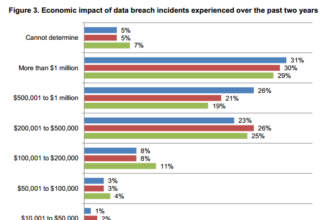Connective tissue – it’s everywhere. From joints and skin to the digestive system and eyes, when something goes wrong with one of our fundamental building blocks, such as collagen, the entire body is affected. And, though most of them are rare, there are over 200 different connective tissue disorders, and there’s growing interest in their diagnosis and management, and a growing market for related products. Perhaps most importantly, though, because of the complexity of connective tissue disorders, research into the treatment is drawing professionals from a wide array of specialties together as collaborators.
Marfan Syndrome: A Case Study
One of the most widely known and understood connective tissue disorders is Marfan syndrome, which is caused by a genetic defect affecting how the body makes fibrillin-1. From the outside, though, the most distinctive features of those with Marfan syndrome is their unusual height and long limbs. Athletes like Michael Phelps, for example, have been suspected of having Marfan syndrome – though doctors suspect Phelps is on the “Marfan spectrum” but does not have the condition. Indeed, in average individuals without the access to medical professionals that someone like Michael Phelps has, extreme height is often what causes doctors to recommend an evaluation.
In addition to being one of the best known connective tissue disorders, Marfan syndrome provides a useful case study for how medical professionals must work collaboratively to treat these conditions. Typically, Marfan syndrome patients should be under the care of rheumatologists, orthopedists, cardiologists, ophthalmologists, and potentially other specialists like geneticists and gastroenterologists. This is not unusual for connective tissue disorder patients, no matter what their diagnosis.
Cardiologists Lead Collaboration
Cardiologists are uniquely positioned to lead collaborative care for connective tissue disorder patients because they have long been involved in treating Marfan syndrome. Though Marfan patients are marked by their height, one of the most serious problems they face is an increased risk of aortic dissection or aortic aneurysm, both of which can be fatal. Because this is a known risk, people with Marfan syndrome are immediately referred to cardiologists for monitoring. Over time, many are also undergoing aortic root surgery or aortic stenting via a minimally invasive procedure by an interventional cardiologist.
Another specialty that should be centrally involved in treating connective tissue disorders is rheumatology. In fact, because many connective tissue disorders involve the muscles and joints – musculoskeletal pain is often the first symptom in those diagnosed between older childhood and adulthood – patients may seek out a rheumatologist first. And these patients may be on to something; rheumatology patients are at an increased risk of cardiovascular disease. This is particularly true of patients with system lupus erythematosus (SLE), an inflammatory connective tissue disorder, those with some types of Ehlers-Danlos syndromes, a collection of conditions caused by abnormal collagen production. These patients may be complaining about joint or muscle pain, but they should still be evaluated by a cardiologist, even if they don’t (yet) have a related complaint or symptoms.
Other Key Collaborators
Of course, cardiologists can’t be expected to carry the full weight of collaboration in connective tissue disorder treatment – only some patients will see one during the early parts of treatment. Rather, all doctors should be taught that, if a connective tissue disorder is diagnosed or suspected, that patients should be funneled into a collaborative care framework. Unfortunately, the American healthcare system isn’t structured for this type of treatment, but primary care providers can help patients acquire the right combination of referrals, while other specialists can provide overall guidance.
One specialty that should receive particular training in connective tissue disorders are sports medicine professionals because, early in life, some of the symptoms of these conditions can be seen athletically advantageous. Marfan syndrome patients are unusually tall, while those with Ehlers-Danlos may employ genetic hypermobility in dance or gymnastics. With overextension of these abilities, however, patients may make their conditions worse. Furthermore, sports medicine doctors may be the first to identify that these traits aren’t just athletic advantages, but symptoms of something more serious.
To ensure that young athletes get the care they need, coaches and sports medicine professionals can be trained to evaluate for a few basic indicators of Marfan syndrome or Ehlers-Danlos hypermobility type, such as the thumb and wrist signs often seen in these conditions, Beighton score testing used to diagnose Ehlers-Danlos, and unusual body proportions. Though these are not definitive indicators, they can help sports medicine doctors and even coaches determine whether athletes need further evaluation.
Patients with connective tissue disorders are used to advocating for themselves in the healthcare system because their diseases are poorly understood, but when doctors collaborate, they can give patients the support they deserve.
Find ways to build professional connections, to work together, and share information beyond the medical record. Patients shouldn’t have to be their own doctors just because they have a rare disease.








